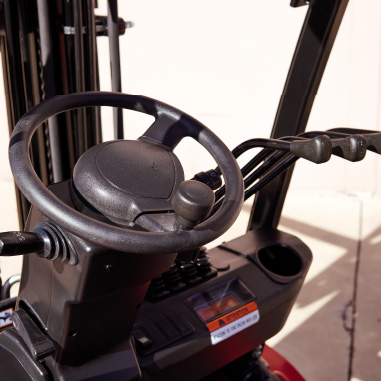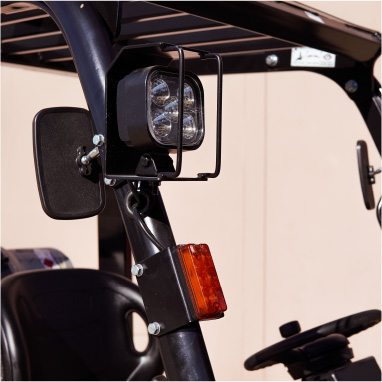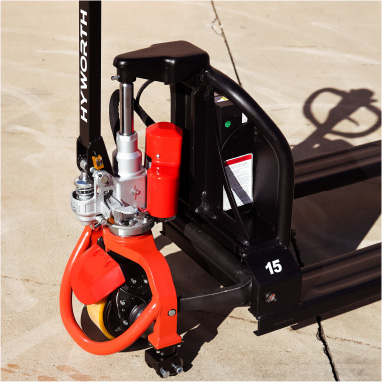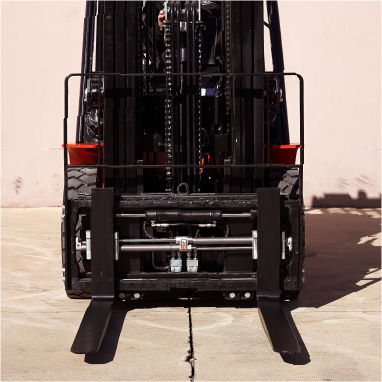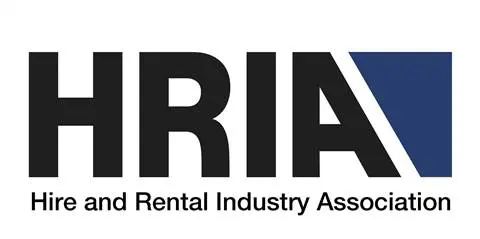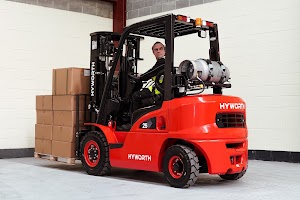
Have you ever wondered what a walk behind forklift is and how it can help in your workplace? In many Australian businesses, space is tight and efficiency is key. That’s where walk behind forklifts come in handy. These forklifts are smaller than the usual ones, making them perfect for moving things around in narrow spaces where bigger forklifts can’t go.
This blog post will introduce you to the world of walk behind forklifts, explain why they’re useful, and show you how to use them properly. Whether you’re already familiar with forklifts or thinking about using one for the first time, this guide will help you understand why walk behind forklifts could be exactly what your business needs to work smarter and faster.
What is a walk behind forklift?
A walk behind forklift, also known as a walkie stacker forklift, is a small but mighty piece of equipment designed for lifting and moving loads. Unlike the bigger, ride-on forklifts, these are operated from behind by a user walking with them. This design makes them ideal for working in limited spaces where moving around can be a challenge.
So, what makes a walk behind forklift stand out? Its size and manoeuvrability are key. These forklifts are perfect for warehouses, shops, and other places where space is at a premium. They can easily navigate through narrow aisles, between shelves, and in other tight spots where a traditional forklift simply can’t go.
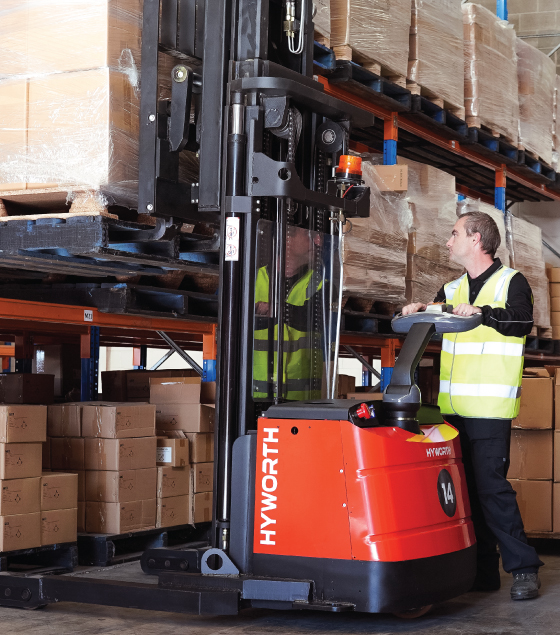
Besides their ability to fit into small areas, walk behind forklifts are known for their ease of use. You don’t need a special license to operate them, making them accessible to a wide range of workers. Plus, they’re versatile. Whether you’re moving pallets, stacking boxes, or transporting goods, a walk behind forklift can handle a variety of tasks, making them a flexible option for many businesses.
In summary, walk behind forklifts offer a practical solution for moving goods in tight spaces. Their design prioritises safety, efficiency, and flexibility, making them an essential tool in any space-conscious workplace.
The various types of walk behind forklifts
Walk behind forklifts come in several types, each designed to meet specific needs in the workplace. Let’s take a closer look at some of the most common ones:
Straddle stacker
The straddle stacker is a favourite for its ability to lift and transport pallets easily. What’s special about it? Its legs stand on either side of the pallet, offering stability and support. This design is perfect for picking up various pallet sizes, especially in tight spots.
Reach stacker
Next up, we have the reach stacker. This type stands out because it can extend its forks beyond the machine’s body, allowing it to reach into racking or lift loads over obstacles. It’s a top pick for businesses that need to stack items in deep shelves or spaces.
Ride-on stacker
For those needing a bit more speed and comfort, the ride-on stacker offers a platform for the operator to stand on while moving goods. It combines the compactness of a walk behind model with the convenience of riding, ideal for longer distances within a warehouse.
Counter-balance stacker
The counter-balance stacker doesn’t need straddle legs because it uses a weight at the back to balance loads. This makes it a good choice for lifting closed-bottom pallets and navigating in areas where straddle legs might not fit.
Standard walkie stacker
Lastly, the standard walkie stacker is the all-rounder of the group. It’s straightforward, with forks that lift and carry loads without the need for straddling or counter-balancing. This simplicity makes it versatile for a wide range of tasks and environments.
Each of these walk behind forklifts has its own set of strengths, making them suited to different types of jobs and workspaces. Knowing which one fits your needs can help streamline your operations and make lifting tasks easier and safer.
How to use a walk behind forklift safely and effectively
Using a walk behind forklift might seem straightforward, but there are essential steps and safety measures every operator must follow to ensure workplace safety and efficiency. Here’s how to get started:
Get trained
First things first, even though operating a walk behind forklift is simpler than handling larger forklifts, proper training is crucial. Opt for Australian certification training, which covers operational techniques, safety protocols, and maintenance. This training ensures you’re up to speed with the best practices and legal requirements.
Perform a pre-use check
Before you start your shift, always check the forklift for any signs of wear or damage. Look at the forks, handle, and wheels to make sure everything’s in good working order. Reporting any faults before you begin can prevent accidents and breakdowns.
Know your path
Plan your route before moving a load. Ensure the path is clear of obstacles and that you have enough space to manoeuvre comfortably. Being familiar with your route reduces the risk of collisions or dropping the load.
Lift and transport safely
When lifting a load, ensure it’s secure and balanced. Don’t overload the forklift, and keep the load at a low height while moving to maintain stability. Always move at a speed that allows you to react safely to any unexpected obstacles.
Keep an eye on your surroundings
While operating the forklift, stay aware of your environment and any people who might enter your working area. Clear communication with colleagues and using signals when necessary can help prevent accidents.
Versatile applications and benefits
Walk behind forklifts are not just versatile, they’re essential tools in various settings, offering a host of benefits that make them a smart choice for many businesses. Here’s how they’re used and why they’re so beneficial:
In warehouses, every inch of space counts. Walk behind forklifts excel here, easily navigating narrow aisles to stack and retrieve goods. They’re also stars in retail environments, where they can quickly restock shelves or move stock from the backroom to the shop floor without disrupting customers. Moreover, in smaller industrial sites, they offer the lifting power needed without the bulk of larger forklifts, making them ideal for tight spaces.
One of the biggest advantages is that operators usually don’t need a specialised license to use a walk stacker forklift, which makes training simpler and lets more of your team get involved in moving stock. They’re also more affordable than their larger counterparts, both in upfront costs and maintenance, making them a cost-effective solution for many businesses.
Manoeuvrability is another key benefit. Their compact design allows them to turn on a dime and operate in spaces where traditional forklifts can’t. Plus, they’re designed with safety in mind, reducing the risk of accidents in tight spaces.
Finally, walk behind forklifts are available in various models to suit different tasks, whether it’s lifting lightweight materials or moving heavier loads. This adaptability means you can select the perfect model for your specific needs, ensuring efficiency and productivity in your operations.
Finding the perfect walk behind forklift for your needs
Choosing the right walk behind forklift for your warehouse or business operations is crucial. It’s not just about having the right tool for the job; it’s about enhancing efficiency, safety, and productivity. That’s where Hyworth Forklifts steps in.
At Hyworth Forklifts, we understand the challenges of working in confined spaces. Our range of walk behind forklifts is specifically designed for such environments. With excellent lift heights and unparalleled maneuverability, our walkie stackers are a game-changer for tight spaces. They navigate narrow aisles with ease, allowing you to maximise your warehouse’s potential.
One of the standout features of Hyworth’s walk behind forklifts is their eco-friendliness. Like electric forklifts, our walkie stackers don’t emit harmful exhaust, helping you to reduce your carbon footprint without sacrificing performance. This makes them an ideal choice for businesses aiming for sustainability alongside productivity.
Our diverse lineup, including the versatile Hyworth 1.4T Walkie Stacker and the compact yet powerful Hyworth 1.1T Lithium Walkie Stacker, caters to various lifting needs, from light to more demanding tasks. With options ranging from the Hyworth 1.4T Walkie Reach Stacker with lifts from 3.7m to 5.5m, we ensure that you’ll find the perfect fit for your specific requirements.
Conclusion
In summary, understanding what is a walk behind forklift and its various types can significantly boost your operations, especially in tight spaces. Hyworth Forklifts offers an extensive range of walkie stackers that combine efficiency, safety, and eco-friendliness. Ready to transform your warehouse efficiency? Explore our collection or get in touch for more details and find the perfect walk behind forklift for your needs today.
